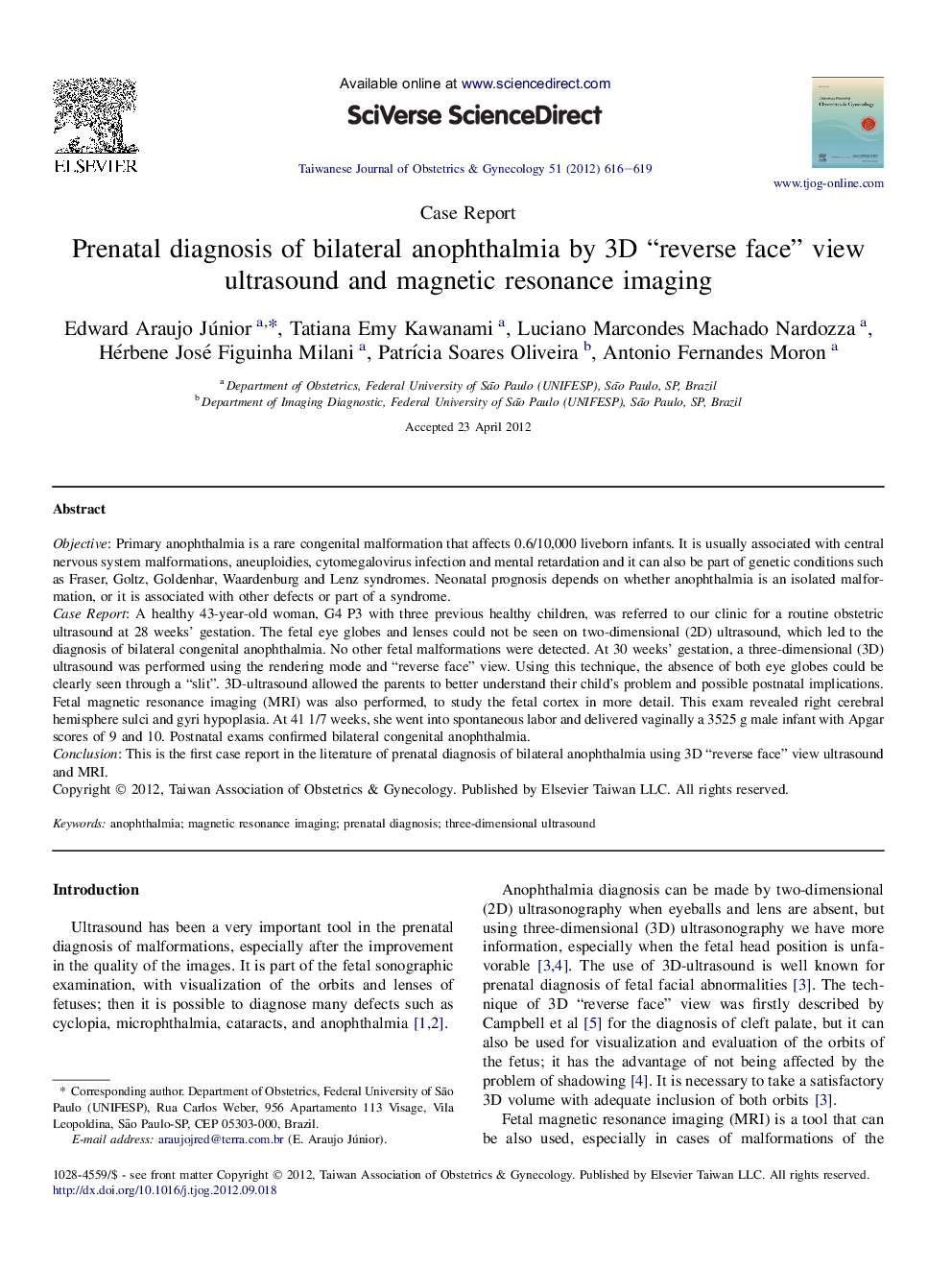| Article ID | Journal | Published Year | Pages | File Type |
|---|---|---|---|---|
| 3975652 | Taiwanese Journal of Obstetrics and Gynecology | 2012 | 4 Pages |
ObjectivePrimary anophthalmia is a rare congenital malformation that affects 0.6/10,000 liveborn infants. It is usually associated with central nervous system malformations, aneuploidies, cytomegalovirus infection and mental retardation and it can also be part of genetic conditions such as Fraser, Goltz, Goldenhar, Waardenburg and Lenz syndromes. Neonatal prognosis depends on whether anophthalmia is an isolated malformation, or it is associated with other defects or part of a syndrome.Case ReportA healthy 43-year-old woman, G4 P3 with three previous healthy children, was referred to our clinic for a routine obstetric ultrasound at 28 weeks’ gestation. The fetal eye globes and lenses could not be seen on two-dimensional (2D) ultrasound, which led to the diagnosis of bilateral congenital anophthalmia. No other fetal malformations were detected. At 30 weeks’ gestation, a three-dimensional (3D) ultrasound was performed using the rendering mode and “reverse face” view. Using this technique, the absence of both eye globes could be clearly seen through a “slit”. 3D-ultrasound allowed the parents to better understand their child’s problem and possible postnatal implications. Fetal magnetic resonance imaging (MRI) was also performed, to study the fetal cortex in more detail. This exam revealed right cerebral hemisphere sulci and gyri hypoplasia. At 41 1/7 weeks, she went into spontaneous labor and delivered vaginally a 3525 g male infant with Apgar scores of 9 and 10. Postnatal exams confirmed bilateral congenital anophthalmia.ConclusionThis is the first case report in the literature of prenatal diagnosis of bilateral anophthalmia using 3D “reverse face” view ultrasound and MRI.
